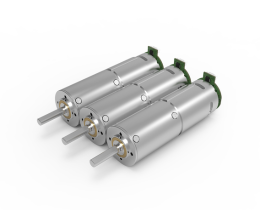The Quiet Powerhouse You’ve Been Overlooking
Let’s talk about workhorses. Not the kind with hooves, but the ones humming in factories, garages, and workshops—gear motors. Specifically, the 120V models that don’t get enough spotlight. Imagine a machine that’s been running your conveyor belt for years without a hiccup, or the motor quietly powering your automated gate. That’s the unsung hero we’re diving into today.
.webp)
Wait, why 120V?
Glad you asked. Think of voltage like a language. 120V speaks to a lot of systems without needing a translator. It’s the Goldilocks zone for compatibility—enough juice to handle heavy loads but not so specialized that you need custom setups. Got an old industrial mixer? A new packaging line? A 120V gear motor slides right in, no drama.
KPOWER’s take on this? They’ve cracked the code on balancing raw power with longevity. Picture a motor that doesn’t just work but thrives under pressure. One customer described theirs as “the stubborn friend who refuses to quit”—even after three years of running non-stop in a bakery’s dough-kneading setup.
Q: What’s the biggest myth about gear motors?
A: That “louder = stronger.”
Truth is, noise often means friction, wear, or inefficiency. KPOWER’s 120V models run quieter because they’re built tighter. Precision gears, sealed bearings, and a housing that laughs at dust. Efficiency isn’t just about energy savings—it’s about less downtime, fewer repairs.
Here’s the thing: durability isn’t sexy until you need it. A gear motor buried in machinery isn’t something you swap out for fun. KPOWER uses hardened steel gears and triple-tested insulation because “good enough” isn’t in their vocabulary. One user put it bluntly: “I forgot it was there until my coffee machine died first.”
Random thought: Ever notice how machines mirror life? A gear motor’s job is to adapt—high torque at low speeds, smooth shifts under load. KPOWER’s designs lean into that philosophy. No flashy gimmicks, just smart engineering. Like their patented cooling system that uses airflow patterns from the housing grooves. Simple? Yes. Genius? Absolutely.
Q: How do I know it’ll last?
A: Look for the “boring” specs.
KPOWER publishes mean time between failures (MTBF) data—not exactly beach reading, but it tells you they’re confident. Their 120V line averages 25,000 hours. Translation: run it 8 hours a day, and you’ll get… let’s see… over 8 years? Math isn’t my strong suit, but you get the idea.
Story time: A small print shop owner once told me their KPOWER motor survived a flood. “Dried it out, oiled it, still runs.” Now, I’m not saying you should test that, but it’s a flex.
Final thought: Gear motors aren’t about revolutions. They’re about reliability in the background. If your operation needs something that won’t tap out during crunch time, maybe it’s time to stop overcomplicating things. Stick with voltage that plays nice, engineering that’s obsessive, and a brand that’s quietly become the backup singer everyone actually listens to.
PS—No, they didn’t pay me to say this. But if you ever find a motor that outlasts your Wi-Fi router, you’ll understand.


































.webp)

